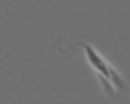(Press-News.org) For the health and happiness of nurses – and for the best care of hospital patients – new Cornell research suggests exposure to natural light may be the best medicine.
In a forthcoming Cornell study published in the journal Health Environments Research and Design, Rana Zadeh, assistant professor of design and environmental analysis, discovered nurses who had access to natural light enjoyed significantly lower blood pressure, communicated more often with their colleagues, laughed more and served their patients in better moods than nurses who settled for large doses of artificial light.
Letting natural light into the nurses' workstations offered improved alertness and mood restoration effects. "The increase in positive sociability, as measured by the occurrence of frequent laughter, was … significant," noted Zadeh in the paper.
Nurses work long shifts, during non-standardized hours. They work on demanding and sensitive tasks and their alertness is connected to both staff and patient safety. Past evidence indicates natural light and views have restorative effects on people both physiologically and psychologically. Maximizing access to natural daylight and providing quality lighting design in nursing areas may be an opportunity to improve safety though environmental design and enable staff to manage sleepiness, work in a better mood and stay alert, according to Zadeh.
"Nurses save lives and deal with complications every day. It can be a very intense and stressful work environment, which is why humor and a good mood are integral to the nursing profession," Zadeh said. "As a nurse, it's an art to keep your smile – which helps ensure an excellent connection to patients. A smart and affordable way to bring positive mood – and laughter – into the workplace, is designing the right workspace for it."
Access to natural daylight, and a nice view to outside, should be provided for clinical workspace design, said Zadeh. In situations where natural light is not possible, she suggests optimizing electric lighting in terms of spectrum, intensity and variability to support circadian rhythms and work performance.
"The physical environment in which the caregivers work on critical tasks should be designed to support a high-performing and healthy clinical staff," she said " improving the physiological and psychological wellbeing of healthcare staff, by designing the right workspace, can directly benefit the organization's outcomes".
INFORMATION:
In addition to Zadeh, this study, "The Impact of Windows and Daylight on Acute-Care Nurses' Physiological, Psychological, and Behavioral Health," was authored by Mardelle Shepley, Texas A&M University; Cornell doctoral candidate Susan Sung Eun Chung; and Gary Williams, MSN, RN. The research was supported by the Center for Health Design Research Coalition's New Investigator Award.
Cornell University has television, ISDN and dedicated Skype/Google+ Hangout studios available for media interviews.
Daylight is the best medicine, for nurses
2014-08-04
ELSE PRESS RELEASES FROM THIS DATE:
Diet change -- A solution to reduce water use?
2014-08-04
Eating less meat would protect water resources in dry areas around the world, researchers at Aalto University in Finland have found.
Reducing the use of animal products can have a considerable impact on areas suffering scarce water resources, as meat production requires more water than other agricultural products.
Diet change together with other actions, such as reduction of food losses and waste, may tackle the future challenges of food security, states researcher Mika Jalava from Aalto University in Finland.
Growing population and climate change are likely to ...
Cell plasticity may provide clues to origin of aggressive type of breast cancer
2014-08-04
INDIANAPOLIS -- Healthy breast cells may be able to reinvent themselves -- some have the flexibility to change after they are mature -- which leads researchers to postulate that similarities exist between this occurrence and the origins of a particularly aggressive type of breast cancer.
A team of researchers, led by Candice A.M. Sauder, M.D., while a resident at the Indiana University Department of Surgery, reported online in BMC Cell Biology that healthy breast cells separated from their normal environment were able to transform into types of cells similar to those ...
Students cope well with healthier snacks
2014-08-04
Students do not mind buying healthier snacks from vending machines, according to research published in the International Journal of Food Safety, Nutrition and Public Health. The findings could have implications for campus health initiatives as well as vendor profits.
The common stereotype of the busy student is of someone who will grab a junk food snack between lectures and rarely chooses a decent, hot meal over a chance to share a beer or two with fellow students. If the stereotype is an obvious generalization, one point remains true, snacks from vending machines on ...
Diabetes: A duo helps better
2014-08-04
Various active substances in oral antidiabetic agents are frequently combined in the treatment of diabetes in order to achieve an effective reduction in the blood sugar. A new, very promising approach combines the substances metformin and SGLT2 inhibitors, the latter were just approved in 2012. Scientists headed by Dr. Susanne Neschen and Prof. Dr. Martin Hrabě de Angelis from the Helmholtz Zentrum München, in cooperation with Ludwig-Maximilians-Universität München and drug manufacturer Sanofi Aventis, have discovered how the two substances reinforce each other.
Medicinal ...
Drilling in the dark: Biological impacts of fracking still largely unknown
2014-08-04
MADISON, Wis. – As production of shale gas soars, the industry's effects on nature and wildlife remain largely unexplored, according to a study by a group of conservation biologists published in Frontiers in Ecology and the Environment on August 1.
The report emphasizes the need to determine the environmental impact of chemical contamination from spills, well-casing failure, and other accidents.
"We know very little about how shale gas production is affecting plants and wildlife," says author Sara Souther, a conservation fellow in the Department of Botany at the ...
New insights into why adolescents carry meningitis-causing bacteria
2014-08-04
University of York scientists have shed new light on why teenagers and young adults are particularly susceptible to meningitis and septicaemia.
The team from the University's Department of Biology has discovered a novel metabolic pathway in the bacterium Neisseria meningitidis that may explain why this age group is particularly at risk of infection.
The results of the research, which was supported by the Centre for Chronic Diseases and Disorders (C2D2), are reported in the journal Molecular Microbiology.
N. meningitidis is a major cause of meningitis and septicaemia, ...
Researchers find potential new predictor of stress-related illnesses
2014-08-04
SAN ANTONIO (Aug. 2, 2014) ― Scientists studying depression in teens have discovered that subtle changes in a gene can predict how the brain reacts to stress, which can cause such health issues as depression, post-traumatic stress disorder and obesity.
The research, published Aug. 2 in the journal Nature, focuses on two longitudinal studies led by Douglas E. Williamson, Ph.D., from The University of Texas Health Science Center at San Antonio, and Ahmad Hariri, Ph.D., from Duke University. Scientists from Columbia University and the University of Pittsburgh are ...
Key adjustment enables parasite shape-shifting
2014-08-04
VIDEO:
Researchers show that suppressing expression of a key protein causes major changes in the shape of T. brucei (shown here), the parasite that causes African sleeping sickness.
Click here for more information.
Crafty parasites frequently undergo dramatic shape changes during their life cycles that enable them to adapt to different living conditions and thrive. But these transformations might not be as difficult as they appear, according to a study in The Journal of Cell Biology.
African ...
It's not rocket science. Oh wait, it is
2014-08-04
WASHINGTON, August 4, 2014 — This week, Reactions is blasting off with an episode that's all about rockets. Featuring Doane College Postdoctoral Fellow Raychelle Burks, Ph.D., we examine the chemistry of solid and liquid propellants, orbital maneuvering and the "ride-able explosion" that is a rocket launch. You can "launch" the video at: https://www.youtube.com/watch?v=Yqiq2lQrqGI.
INFORMATION:
Subscribe to the series at Reactions YouTube, and follow us on Twitter @ACSreactions to be the first to see our latest videos.
The American Chemical Society is a nonprofit ...
NASA sees Tropical Storm Bertha leaving the Bahamas
2014-08-04
Tropical Storm Bertha took a "vacation" in the Bahamas on August 3 and NASA's Terra satellite captured an image of the storm that appeared be centered over "Crooked Island."
On August 2, before Bertha visited the Bahamas, the western half of the storm passed over Puerto Rico. A visible image captured by NASA's Terra satellite showed Bertha's clouds stretched from Puerto Rico east, over the British Virgin Islands. NOAA's National Weather Service office in San Juan, Puerto Rico reported 1.36 inches of rainfall from Bertha on August 2.
On August 3 at 15:35 UTC (11:35 a.m. ...




